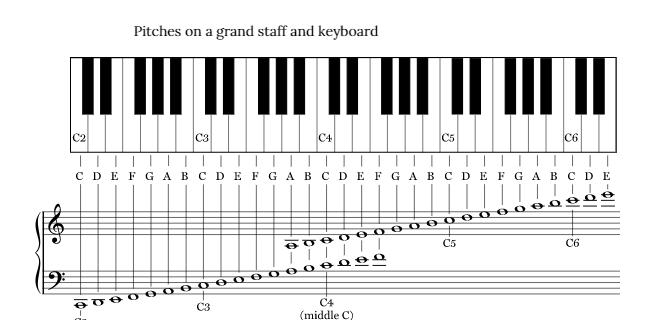Understanding the Matrix

Music is notated in a matrix of 5 lines and 4 spaces called a staff. Piano music is normally written on two of these stacked together called a grand staff. When these two staves appear together there are only three letters between them – B, C, and D – and six semitones from A sharp to D sharp.

There are numerous clefs. These clefs show the relationship between the lines and spaces and a given pitch on the piano. The lowest of the clefs is the Bass Clef (also called the F Clef) and it has a G on its lowest line and an A on its highest line. The Treble Clef (also called the G Clef) has E on its lowest line and F on its highest line. The other clef used is the C Clef which tells us where C is on the staff.

The notes that fall outside of the lines and spaces of these clefs are written on ledger lines, which are lines written above or below the staff to show a note’s relationship to the rest of the staff when the pitch exceeds the pitches offered by the given staff.
We have talked a lot about the notes that are used to describe music but describing the note symbols and their time values is a lesson all on its own. Look out for the next post where I will explain notes and their relationship to time.
